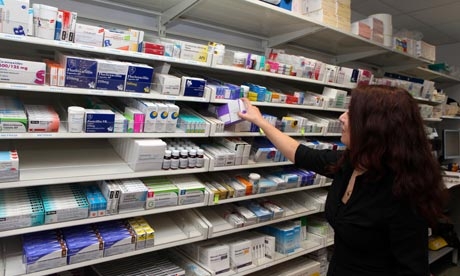
Pharmacists have been offered a $3 billion increase in commonwealth funding to dispense medicines and run programs over the next five years, despite significant drug reforms, a Medicare freeze and concerns over the health budget.
As the Abbott government shifts the focus from higher co-payments to more complex drug subsidy and listing reforms, The Australian has learned that an $18.9bn package has been placed on the table for the next community pharmacy agreement.
The current $15.7bn agreement, negotiated under Labor, expires at the end of next month and has been heavily criticised by the Australian National Audit Office, health economists and consumer groups for its lack of transparency and accountability.
For the first time, the government wants to impose performance measures in the agreement but several sources close to the negotiations say the Pharmacy Guild is resisting, while holding out for a higher level of guaranteed funding that is rumoured to be as high as $21bn.
The parties have been at an impasse for several weeks.
The guild’s push for a pay rise comes at a time when the ongoing freeze on Medicare indexation has doctors complaining of reduced incomes and an inevitable need to charge patients more.
Health Minister Sussan Ley would not be interviewed last night but said through a spokesman that supporting community pharmacies was as crucial as the need to provide more affordable medicines for patients.
Under already announced measures, the government is seeking to save $1.7bn by reducing the cost of generic medicines, $1bn by reducing payments on patent-protected medicines by 5 per cent, and $1bn by removing widely available drugs such as paracetamol and aspirins from the Pharmaceutical Benefits Scheme.
The government recently offered to allow pharmacists to discount the PBS payment by $1 to respond to competition in the sector and make medicines cheaper for consumers.
The audacious proposal would see pharmacists bear the cost of cutting the upfront cost to customers and save the government $400 million over the next five years as people stay under their safety net longer.
“The government understands and appreciates the important role that pharmacists play in delivering access to medicines to Australian patients, as we do the rest of the pharmaceutical supply chain,” Ms Ley said in a statement.
“But we also have a duty as a government to ensure patients and taxpayers get the best deal possible and I want to ensure any agreement we come to — whether it be with pharmacists or drug manufacturers — delivers more affordable medicines for consumers.”
“The proposed $1 discount is an opportunity for pharmacists to offer cheaper medicines through greater competition for consumers — that is a good thing for everyone involved.”
Asked if the current agreement would be rolled over if the government could not come to terms with the guild, Ms Ley said she wanted “constructive negotiations” to continue and not Labor’s “mess” of an agreement.
The Pharmacy Guild’s president, George Tambassis, could not be contacted last night. The guild is a dominant player in the sector and has been backed by the Pharmaceutical Society of Australia.
While the negotiations continue in secret, it is understood the parties have agreed on the need for $1.5bn over five years to reflect the cost of infrastructure and doing business, and for the government to double the amount provided for pharmacists to run programs from $600m to $1.2bn.
The program funding appears to have a focus on rural and remote areas, a key focus for Ms Ley since she took over the portfolio.
The type of performance measures proposed by the government are unclear, however, it appears the guild is holding out for higher block funding, rather than having certain funds tied to performance.
Also uncertain is the fate of competition reform proposals, and whether stalled negotiations would cast a shadow over ownership and location protections enjoyed by pharmacists.
Source: The Australian
